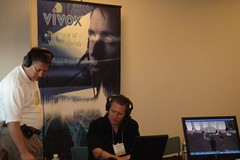Challenges for Ufc Champion Anderson Silva are a Weight Class Above
UFC 78 is quickly approaching and it's main event match-up between Rashad Evans and Michael Bisping made me think about fighters who could cut weight to drop to a lower weight class. In that spirit I am going to discuss four UFC fighters who might be well served by dropping weight and fighting below their current class.
Let me start at the top, the UFC heavyweight division. There are a couple of UFC heavyweights who could make 205lbs, remember Randy Couture fought as a light heavyweight for a while, he even held the light heavyweight title. There is really only one UFC heavyweight who I want to talk about dropping weight. Brandon "The Truth" Vera just dropped a three round decision to former UFC heavyweight champion Tim Sylvia. Brandon didn't loose this match because of his skill-set. He lost because of Tim's size. Tim pushed Vera up against the fence and used his weight to close the distance, essentially negating Vera's superior kicking game. If Brandon Vera dropped down to 205lbs I feel he would be competing on an even playing field and would likely quickly move into title contention.
The UFC light heavyweight division has the majority of guys who should consider dropping weight. There are three that I'd like to discuss, they are Rashad Evans, Michael Bisping and Dan Henderson. You'll note that Bisping and Evans are the main event fighters at UFC 78. Both of these fighters are undefeated at light heavyweight.
Michael Bisping is an outstanding fighter, a good striker with an adequate ground game. However, his recent fight with Matt Hamill shows that he can be manhandled by a stronger opponent. Bisping mostly stayed on the outside in this fight and let Hamill control the action. I believe that this is because he was staying away from Hamill's strength...with is wrestling, and physical strength. We all remember on the Ultimate Fighter when Hamill was overwhelming the other fighters with his physical strength, a move to 185lbs would not only put him into title contention, but would allow Bisping to be stronger than other opponents in that weight class.
Rashad Evans has already dropped a weight class. Rashad competed at heavyweight on the Ultimate Fighter TV series and did very well, winning his division, but his recent bout with Tito Ortiz showed that Rashad, despite his superior wrestling skills is a small light heavyweight. Rashad will have no problems matching strength with Bisping at UFC 78, but when fighting the larger light heavyweights like Forrest Griffin, Wanderlei Silva and Tito Ortiz he will get manhandled, essentially negating his wrestling advantage. A move to 185lbs would likely make Rashad an immediate title contender.
Dan Henderson has already fought at 185lbs and is the current, and likely last, PrideFC 185lb champion. Dan is strong, even for a 205lb fighter and Dan probably has the best wrestling in the UFC. Dan's last fight with Quinton Jackson showed that he can have trouble with a guy who is a good wrestler, a good striker and is as physically strong as he is. There simply isn't a fighter at 185lbs with Dan's strength. With a decisive strength advantage, Dan's heavy hands and fantastic wrestling would take him not only into title contention, but in my eyes he would defeat Anderson Silva.
The UFC 185lb division is probably it's weakest. With a dominant champion and everyone else way below there are seemingly no challengers, but just above at 205lbs there are a bunch of small light heavyweight fighters who might want to consider transitioning to 185lbs.
Jon is a contributing editor at UFC Results - Come to UFC Results at http://www.ufcresultslive.com for UFC Results, UFC Predictions and UFC Fight Cards.
